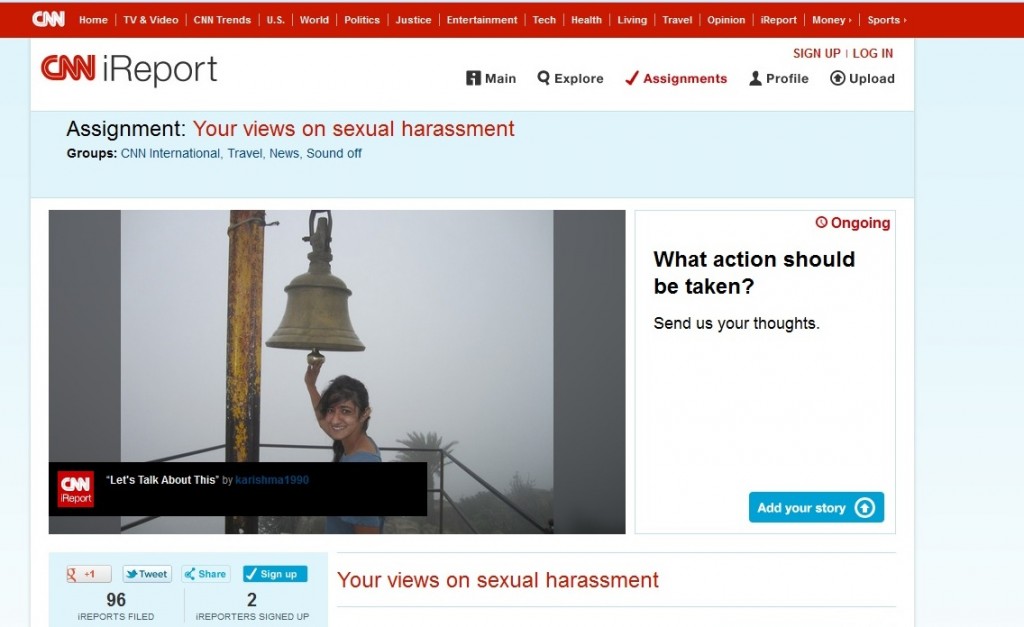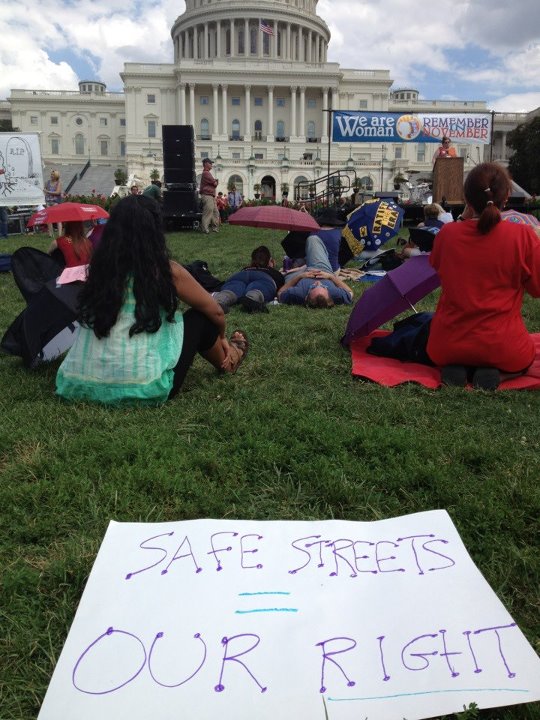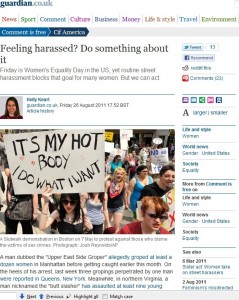Today is Women’s Equality Day and while we’ve come a long way since women gained the right to vote in the USA in 1920, there is still so far to go since sexism and gender violence are very real issues.
Help bring attention to the issue of street harassment by sharing your story with CNN via their iReport assignment.
I shared mine and then linked my story and the issue to Women’s Equality Day.
Street harassment is a global problem. Studies show that more than 90% of women in countries like Egypt, India, Yemen, and the USA experience it. More than 80% do in Canada. A recent study in France found that 25% of women ages 18-29 feel scared when they walk down the streets. In London, 43% of women ages 18-34 had experienced street harassment just during the prior year.
If you add to that the thousands of stories women have shared on my blog Stop Street Harassment, on the Hollaback! sites, and through the The Everyday Sexism Project, as well as the stories they share on personal blogs, Tumblrs and other social media sites, you can see that this is a huge problem.
Repeated street harassment and severe forms of it cause many women emotional distress and significantly impact their lives, including prompting them to avoid going places alone, to change routes and routines, and even to move neighborhoods or quit jobs.
I’ve seen this over and over through the stories shared on my blog Stop Street Harassment. There was the woman in Kansas who considered dropping out of her PhD program because she was routinely harassed by men near her campus; a woman in Mississippi who quit her job at a retail store because male customers began following her to her car after her shift; and a woman in California who was harassed so many times while she waited for a bus to campus that she finally went home, feeling upset and powerless, and missed the class.
Most telling is how unsafe street harassment makes women feel. Gallup data from surveys conducted in 143 countries in 2011 show that in every single county, women are considerably more likely than men to say they feel unsafe walking alone at night in their communities. Women in low-income countries and high-income countries reported the same rate: 41% felt unsafe. In the USA, 38 percent of women felt unsafe, compared with 11 percent of men.
I also want to bring up the young age street harassment begins. For my book, I surveyed 811 women from 23 countries and 45 US states and nearly 1 in 4 had been harassed in public by men by age 12. That’s seventh grade. Nearly 90% had been harassed by age 19.
Some women even say that the first time they heard sexual comments from men on the street was the moment when they felt they transitioned from girlhood to womanhood. This is a sad statement about womanhood in our society.
In the USA, Monday is Women’s Equality Day. I argue that the USA – and no other country – will achieve women’s equality until street harassment ends. Until we can travel and study abroad, walk to the corner store, wait for a bus, and go to a park without fearing or experiencing sexual harassment, we are not equal.
What can we do?
If you’ve faced street harassment, share your stories, especially with men in your life. Make visible this too-often invisible problem. If someone shares a story with you, don’t dismiss it, don’t tell them it’s a compliment, don’t tell them it’s their fault because of what they’re wearing or that they shouldn’t have been there or out alone. Instead, believe them, offer them support, and tell them you’re sorry that happened.
If you have children, nieces/nephews, teach or mentor youth, talk to them about sexual harassment, about respect, and about how to get help. Let’s ensure that the next generation can be in public spaces safely.
Most of all, don’t harass others, be respectful. Ask for consent before talking to someone. Never use sexual language on the street with someone you don’t know without permission to do so. Treat people how you would want someone you love to be treated.
Let’s make public places free from sexual harassment.






